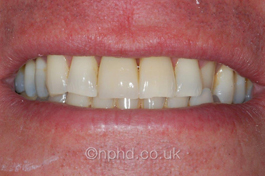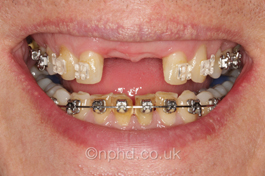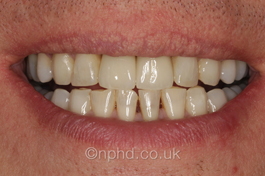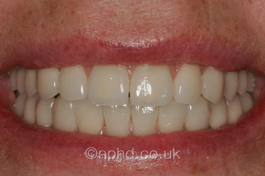A natural tooth consists of the tooth root, which is firmly attached to the jawbone, and the tooth crown, which is the visible part of the tooth.
Dental implants replace the missing natural tooth, the "root" is the titanium implant, which is inserted into the jawbone and can be used to fix crowns, multiple tooth bridges, anchor dentures or even replace all the teeth in the jaw.

1. A fixed solution to missing teeth
Because dental implants are firmly anchored into the jawbone, they look and feel much like a natural tooth.


2. Look like natural teeth
The crown, bridge or denture that is supported by the dental implant is made from high quality materials that closely mimic natural teeth. It is often hard to distinguish a dental implant from a natural tooth.


3. Dental implant can prevent bone loss
Natural teeth keep the jawbone strong and healthy. Chewing forces transmit through the tooth roots to the bone, maintaining bone density. Where teeth are missing, the bone around it doesn't receive this stimulation and may begin to slowly recede over time.
Dental implants help to prevent this natural bone loss by stimulating the bone. This helps to maintain a natural gum shape and also keeps adjacent teeth healthy.
4. Avoids loose dentures
Loose dentures can make eating difficult and can significantly affect people's self-esteem.
Using dental implants to secure or replace dentures can provide the life changing benefits that come with eating, talking and socialising with confidence.

1. Consultation
At New Park House we make every effort to understand what our patients want from their dental treatment so that we can aim to exceed their expectations. Our dentists will explain your all your different treatment options, allowing you to make informed and educated decisions.
2. Digital Planning
The huge advantages in technology have meant that we can plan implant cases with incredible accuracy.
To be a suitable for implant treatments you need enough healthy bone to anchor an implant. Radiographs and CBCT scans show bone quality and quantity. If there is not enough bone, there are often options to build up bone again. Check out our high-end technology here.
3. Implant placement
On the day of implant placement we carefully make an incision into the gum and the implant is inserted into the bone. This may be done under local anesthesia but may also be performed with conscious sedation if requested.
On top of the implant we may place a healing abutment. This helps to shape your gums during healing.
At this stage you may still have a visible tooth gap so, depending on where and how big the gap is, you will receive a temporary acrylic crown, bridge or denture, which may be fastened to the neighbouring natural teeth. It can be possible to place a crown onto the implant on the same day, but this depends on the quantity and quality of the bone.
4. Implant Restoration
When the implant has completely healed, which takes approximately 8-12 weeks, can place the crowns, bridge or denture onto the implants. The implant is exposed from under the gum and the implant position is recorded by an impression or digital scanning. The shade of the neighbouring teeth is recorded so that the replacement restoration blends in with the rest of the mouth.
Close communication with the dental laboratory and digital photography help ensure that the skilled dental technicians are able to create the desired size, shape and colour for the new restoration.
When the final prosthetic restoration is ready it will be attached to the implants. Any necessary adjustments will be made to ensuring that everything feels comfortable and natural. Implant retained restorations and designed to be fully functional and we would encourage you to eat, smile and laugh naturally again.
5. Implant maintenance
Once the implant treatment has been completed regular long term maintenance will be required to maintain the health of the gum around the implants and all of your natural teeth. This will involve checking the health of the gums and bone around the implants clinically and with digital x-rays and we would recommend regular visits to the practice hygienist.
In some cases a dental implant is not a suitable solution to replace missing teeth. In these situations we will be able to discuss alternative treatments such as bridges or dentures.